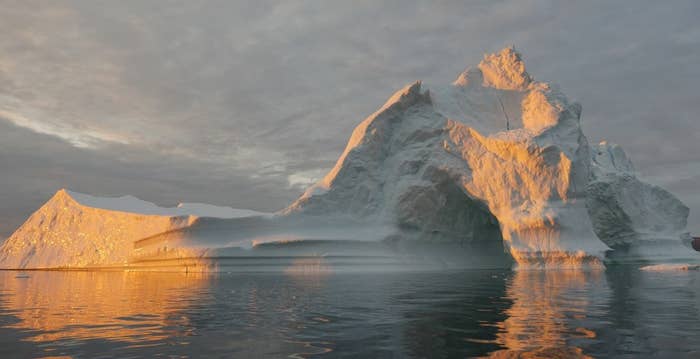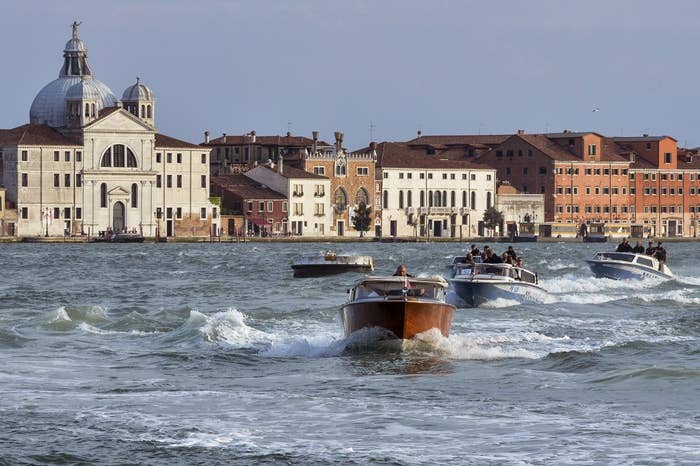
The earth is now "locked in" to a sea level rise of several feet, a brewing disaster that could happen by the turn of the century thanks to warming temperatures, new NASA research indicates.
Steve Nerem, a geophysicist at NASA and the University of Colorado, Boulder, said the world is all but certain to see a three foot sea level rise due to the concentration of carbon dioxide already in the atmosphere.
Nerem told BuzzFeed News Thursday even if global emissions stopped immediately, the effects of CO2 already in the atmosphere would lead to rising sea levels, in a sort of "inertia" effect. The ocean rise could hit three feet by 2100 or later, Nerem said.
"Eventually we're going to get to 3 feet," he added. "Is that going to happen in 2100 or 2200, or somewhere in between? It really depends on what we do with our CO2."
Peter Gleick, a climate scientist and president of the Pacific Institute, was not a member of NASA's research team but praised the conclusions.
"The best science today says it is going to happen and that we're not ready for it," Gleick said. "That, unfortunately, is bad news."

NASA also found sea levels have risen an average of nearly 3 inches since 1992, though the rise hasn't affected the entire world equally.
Since 1900, global sea levels have risen about 7 inches, Nerem said, and the rate of rising has increased over the last two decades, with NASA documenting a nearly 3 inch change since 1992. The geophysicist said multiple factors contributed to the rising, but the largest one was human impact on the environment.
"There can be short term variations due to, for example, El Niños," Nerem said. "But over long time scales, like the last 100 years, almost all the rise we see is due to our influence, in my opinion."
But that rise hasn't been experienced equally; some parts of the world have seen as much as a 9-inch rise, while other areas, such as California, have actually seen sea levels fall in recent years. However, in California's case NASA anticipates accelerated sea level rising over the next decade.
The NASA video below visualizes worldwide changes in sea level since 1992, with warm colors indicating higher waters and cool colors indicating the opposite.
Three things primarily contribute to sea level rise: Water that expands as it gets warmer, melting glaciers, and melting ice sheets in Greenland and Antarctica.
Right now, warming water and the two types of melting all play a nearly equal part in rising sea levels, Gleick said. In the coming decades, however, melting ice will begin to play a larger role in driving up sea levels, and at faster rates.
"In the future, the really big increases in sea level are going to come from Greenland and Antarctica," Gleick said.
A NASA video released Wednesday shows the Greenland ice sheet decreasing in mass from January 2004 to June 2014:
Scientists are already watching melting ice closely. Earlier this year, NASA created the Ocean Melting Greenland project to study the ice, and just last week the European Space Agency (ESA) announced that a five square mile chunk of ice broke off from Jakobshavn, a fast-moving glacier in Greenland.

The newly-calved Greenland iceberg contained enough ice to cover all of Manhattan in a nearly 1,000 foot thick sheet, the ESA reported. And it's calving was one of the largest ever on record.
The video below shows smaller icebergs that were recently calved from a glacier in Iceland.
A rising sea could wreak havoc on cities around the world and the millions of people who live in them.
Gleick said that in California alone, rising sea levels could threaten $100 billion in infrastructure and imperil half a million people.
A report prepared in 2009 by Gleick and other researchers further explores the destruction that could accompany rising sea levels. It found that if sea levels rise four and a half feet by 2100, California could lose 41 square miles of land to erosion. An especially bad storm, like the kind that happens every 100 years or so, could put hundreds of schools, hospitals, fire stations, and even hazardous waste facilities at risk.
Low income and minority communities are particularly vulnerable to effects of rising sea levels, the report also found.
An interactive map from the Pacific Institute shows the parts of California that are currently vulnerable, below in teal, and that would become vulnerable if sea levels rose about four and a half feet, in pink. The map indicates that vast parts of Orange County in Southern California and much of the San Francisco Bay are and will be in danger.


Pacific Institute maps show areas that are currently at risk of flooding in a major storm, in teal, and areas that would be at risk if sea levels rose about 4 feet, in pink.
And the problem isn't unique to California. Gleick said that Florida and the Louisiana coast will be hard hit by rising sea levels, as will islands in the Pacific Ocean and parts of Asia such as Bangladesh.
For places with large populations living in low lying coastal areas, rising sea levels pose a dual threat, Nerem said. Not only will the ocean slowly creep high and higher, but storms and heavy surf will reach further inland and cause more damage.
"The first time you get inundated it's not going to be from the slow rise," Nerem explained, "it's going to be from the storm surge on top of that rise."
The new NASA findings consequently mean difficult times ahead, but Gleick pointed out that there is time to prepare because "this isn't going to happen tomorrow."
"If we reduce greenhouse gas emissions pretty dramatically in the next couple of decades," he said, "these sea level increases will be slower and ultimately lower than they would otherwise be."

